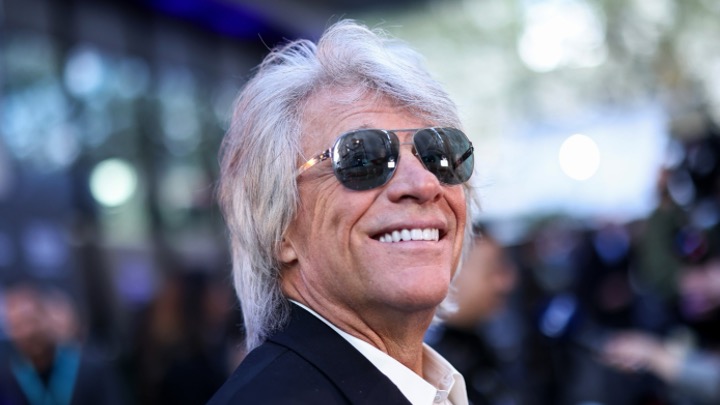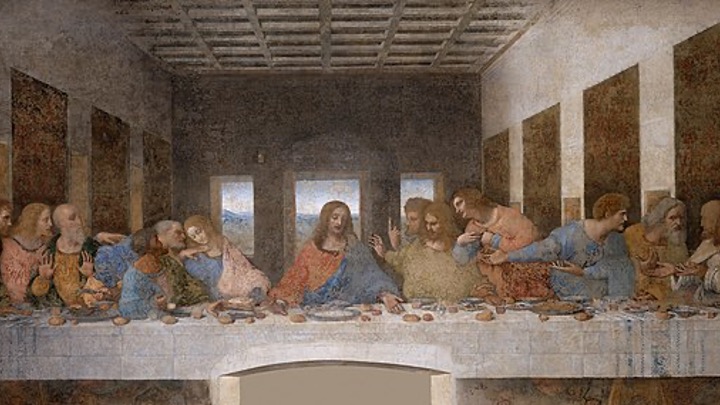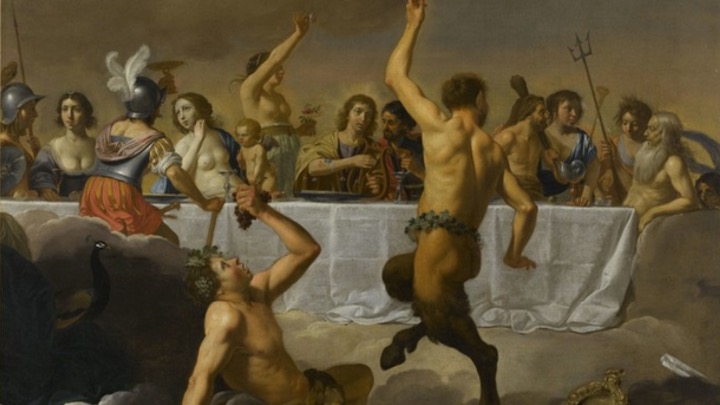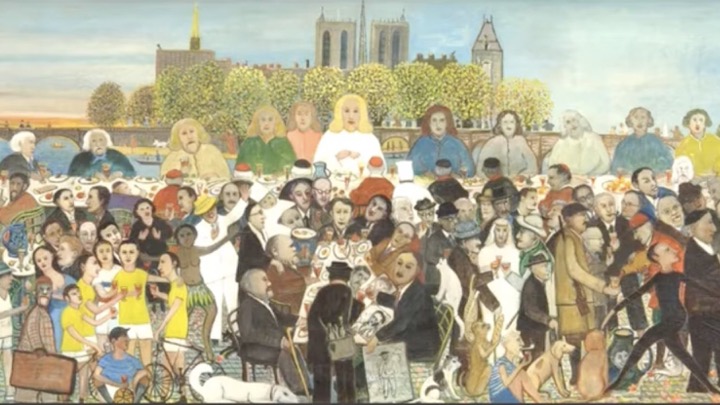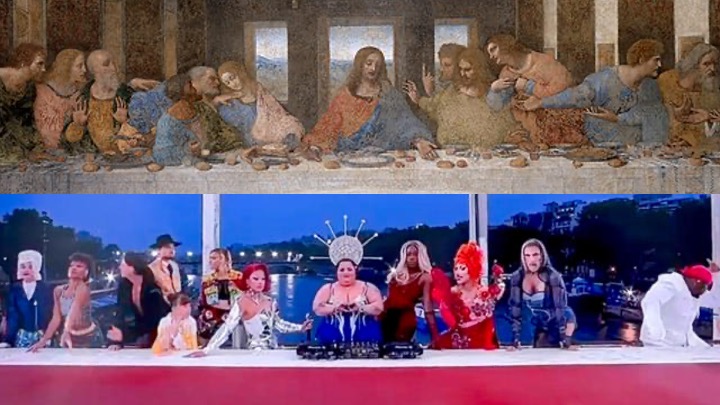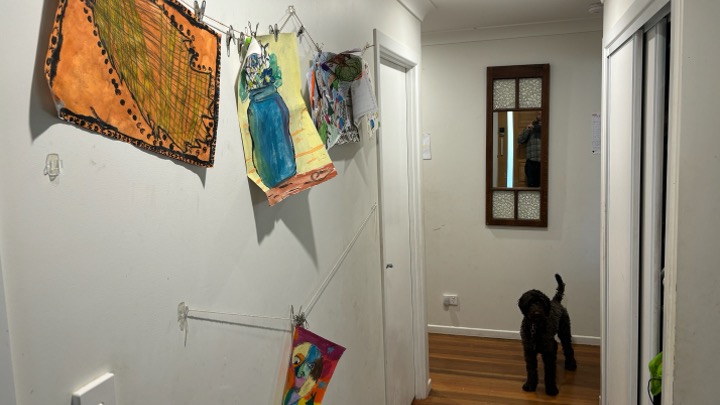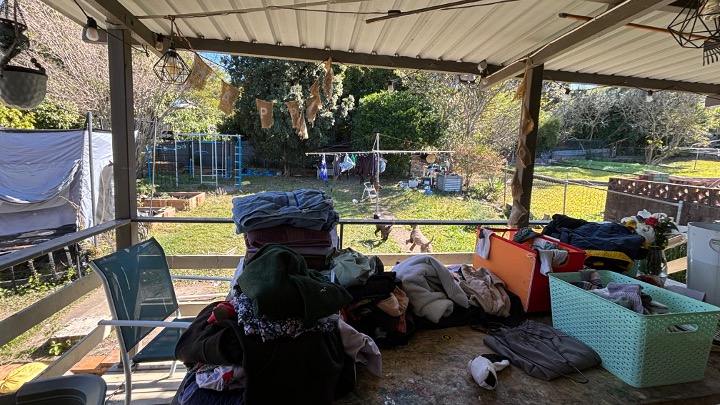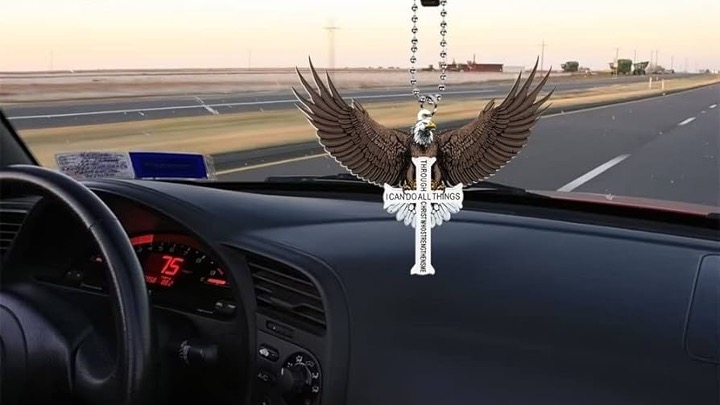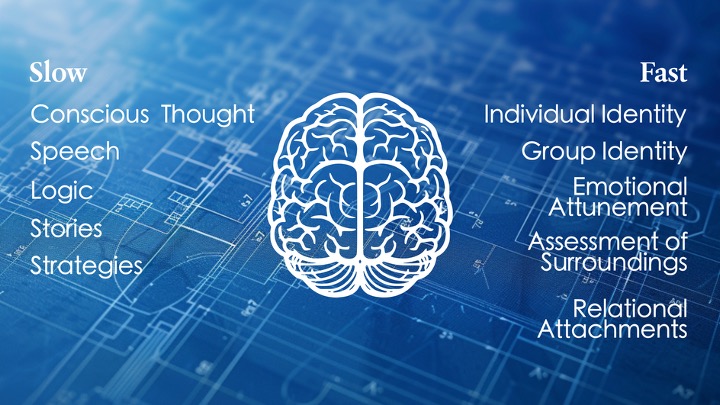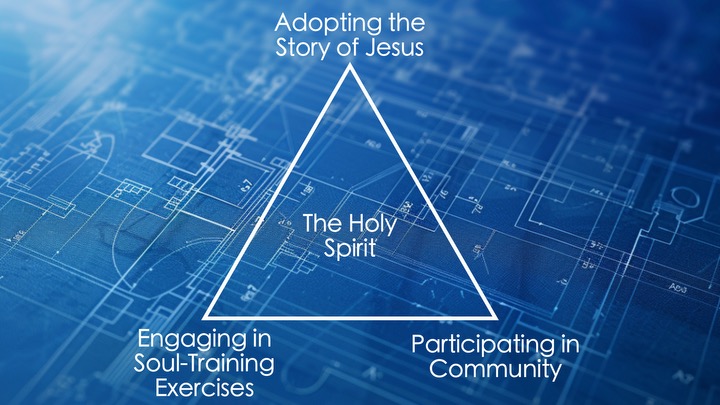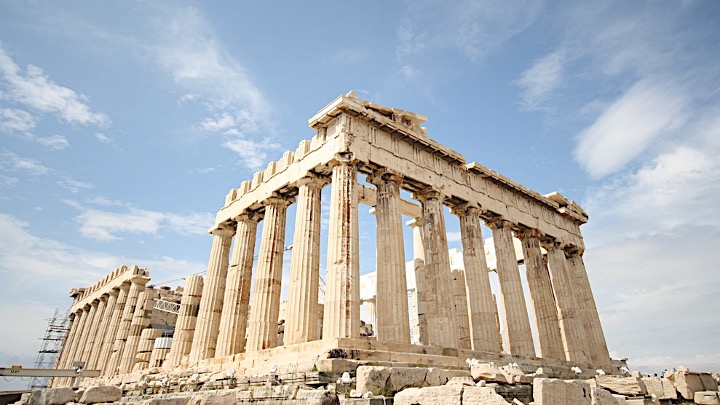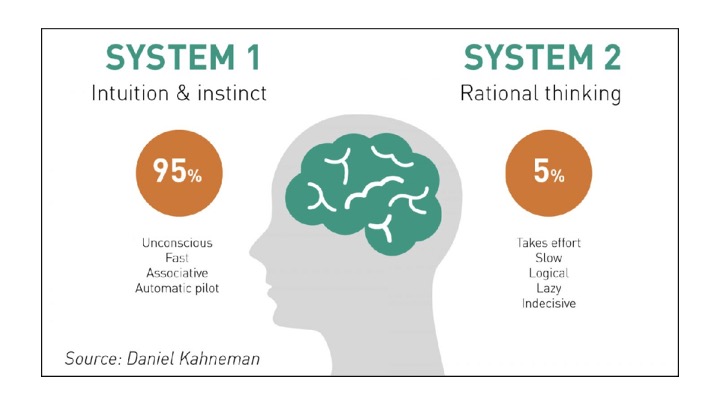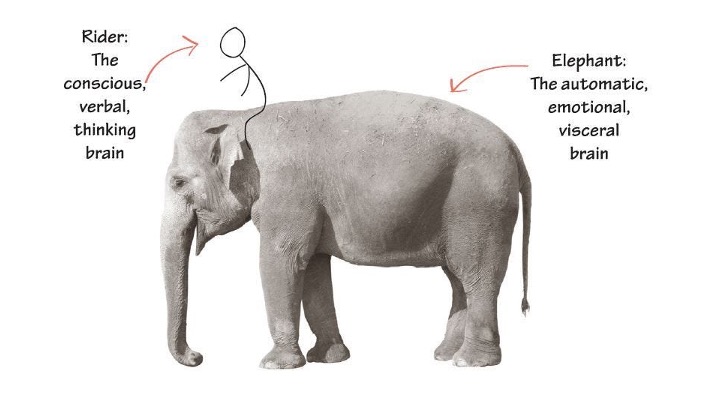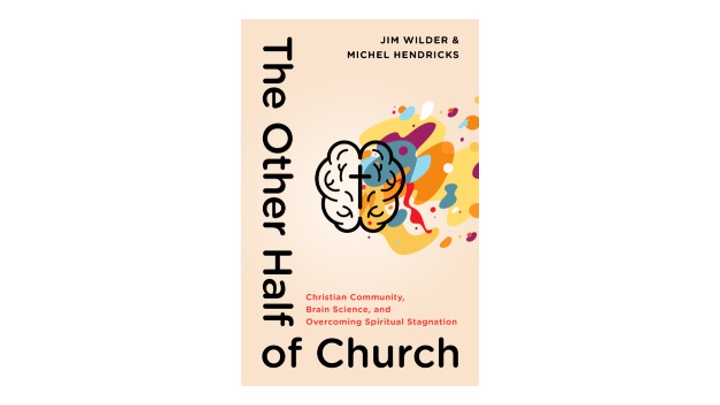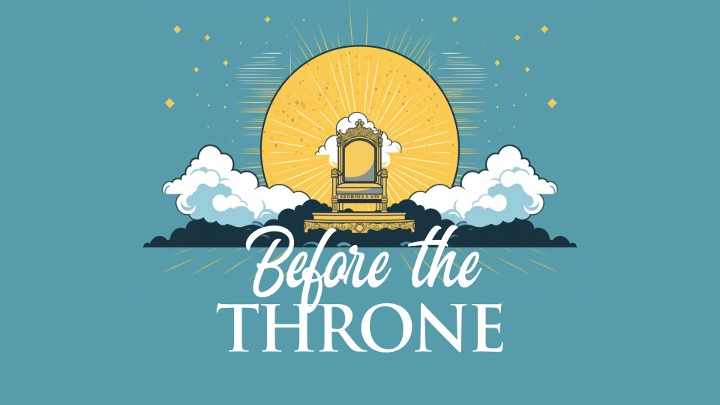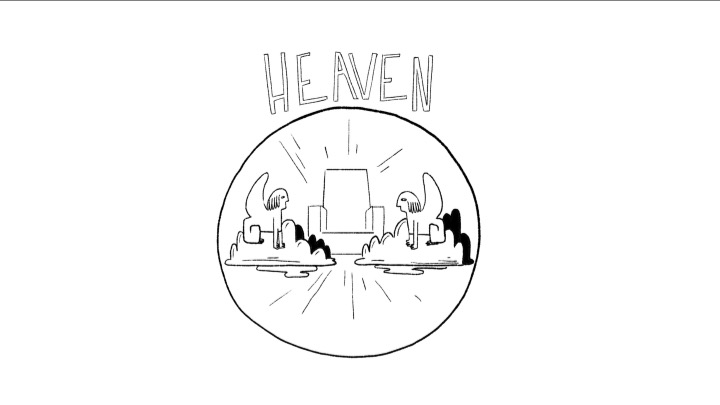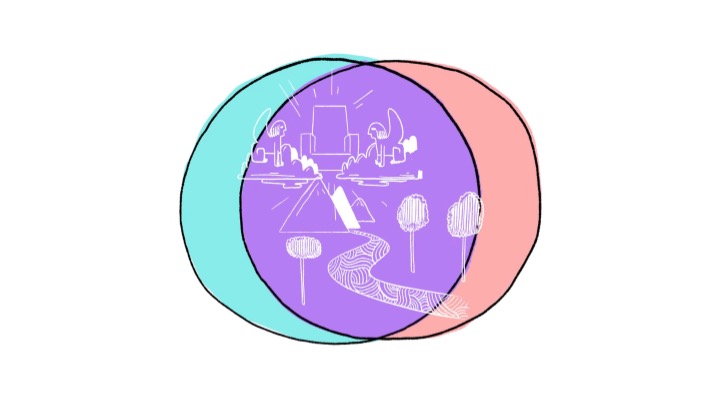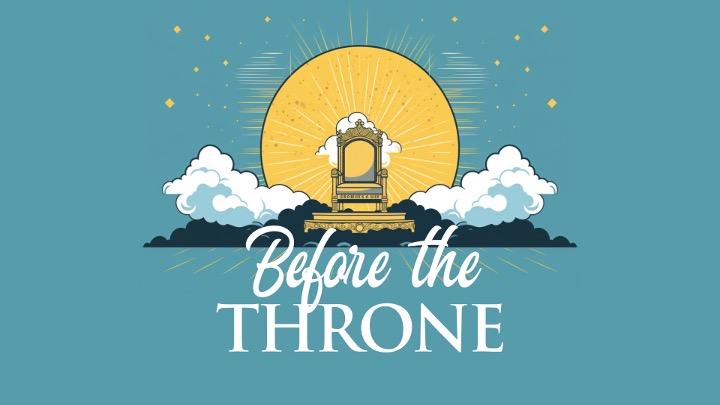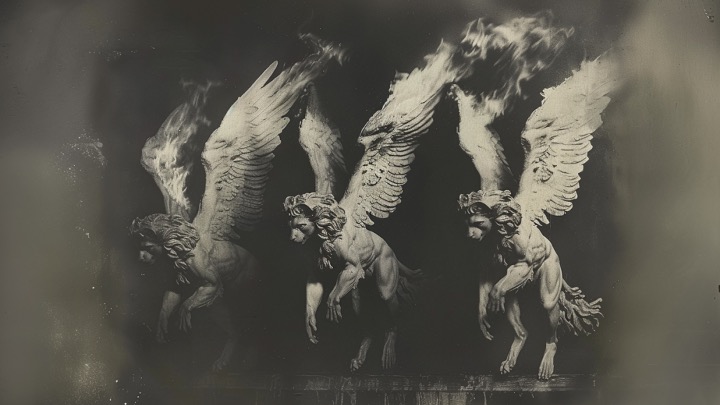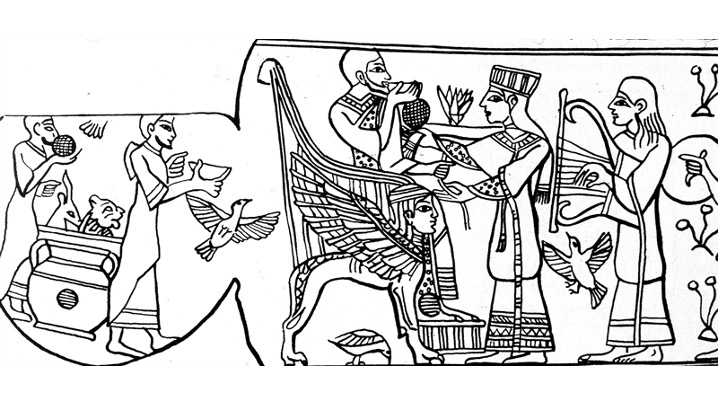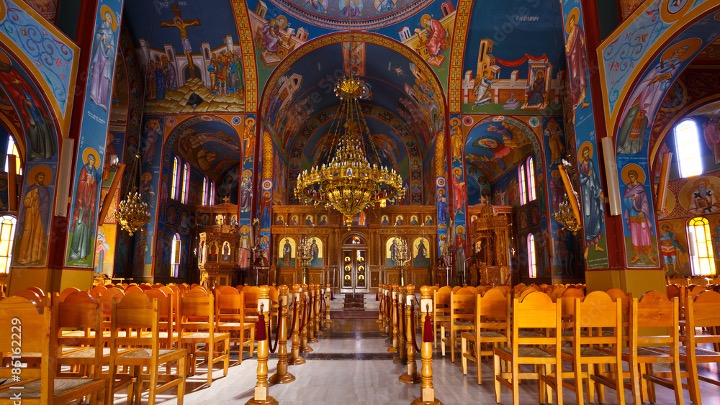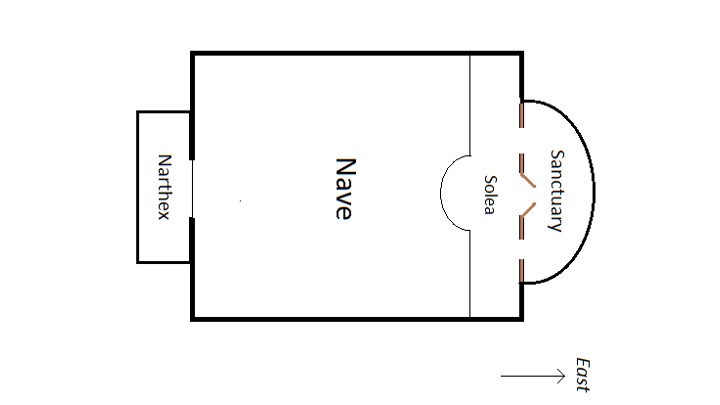This was a sermon preached at City South Presbyterian in 2024. You can listen to the podcast here, or watch it on video. Some of the block quotes were on screen and summarised but have been included in full.

I have a rule with preaching that I do not do sports illustrations.
It is not because I do not love sports. I love sports — but I am aware others do not like sports; or sports illustrations. They are alienating. I am making an exception because I do like weird DIY graphs, and this fits this chapter’s theme — we looked at inhabiting space, and then have spent the last couple of chapters thinking about numbering our days and redeeming the time and the shape of our week — this chapter is about seasons. And you know what has seasons… sports.
At the time I preached this sermon, I had just finished playing a season of over 35s football — soccer for uncultured folks — I am the goalkeeper. In the 2024 season we did not make the finals, so it was all over (in 2025, at the time of posting — we had made the finals, and won the Grand Final).
The team I play for started playing together in the Baptist league; some of us have played together for 15 years — since our 20s, playing against 40 year olds, and then found ourselves in our 40s playing 20 year olds, so we moved to a more age-appropriate league where we are in our prime again, not past it. Now — you have been waiting for the graph I flagged above.
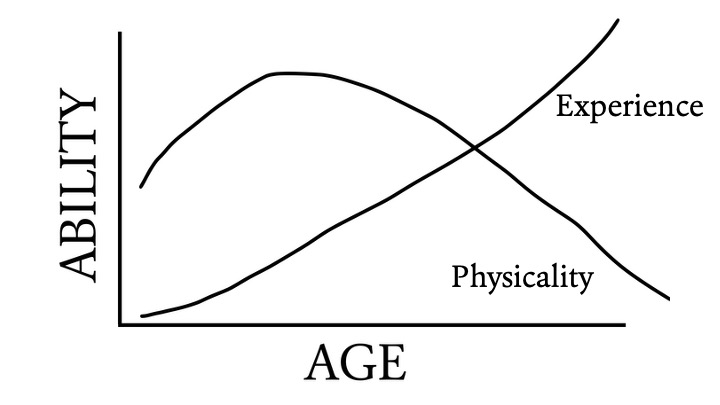
Here is how life works if you play sport. At some point you hit your peak. You are the best you will ever be.
When you are young you are fit and healthy; you might move better, but as you gain experience, you play smarter — and at some point, it all clicks and you hit your peak — the perfect overlap of experience and ability — a real sweet spot. Life before this moment is prep for that season, and from then on, you are always kinda trading on the glory days.
I think I peaked in 2010 — at 27 — here I am lying on the ground in the grand final.
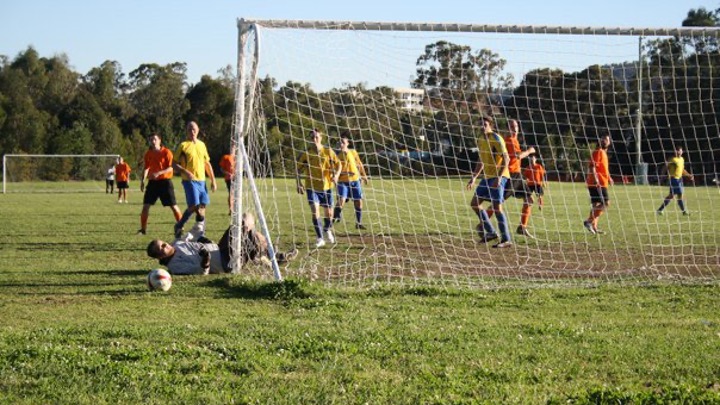
Turns out my graph is based in reality — this journal article looks at average ages of success in different high-level sports in Australia.
First — the good news for people considering a run at the 2032 Olympics — Olympic athletes are getting older on average — there was a 66-year-old competing for Australia in Tokyo.
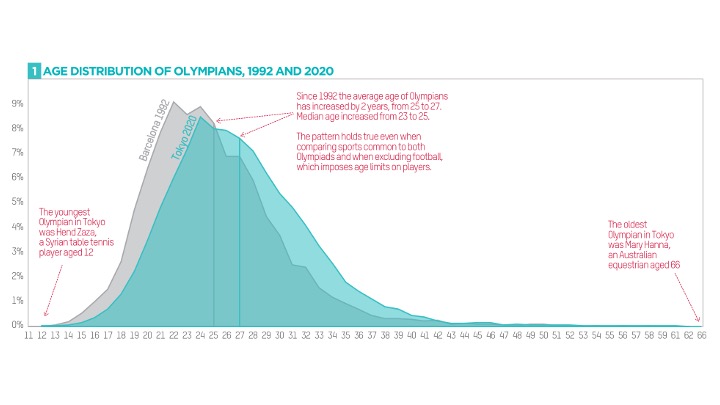
They also looked at male World Cup footballers, concluding attackers peak at 25, defenders at 27, mids in the middle, and goalkeepers are the oldest player type — where our agility and reaction time might decline, we learn resilience and strategic decision-making, and mostly we are just tall.
“Goalkeeping requires significant agility and reaction time. Traits benefiting older players, such as psychological resilience and strategic decision-making, are also important. These skills are thought to develop with experience and age… Their greater playing longevity may be because they are specialized both in skill and body type: they are often taller.”
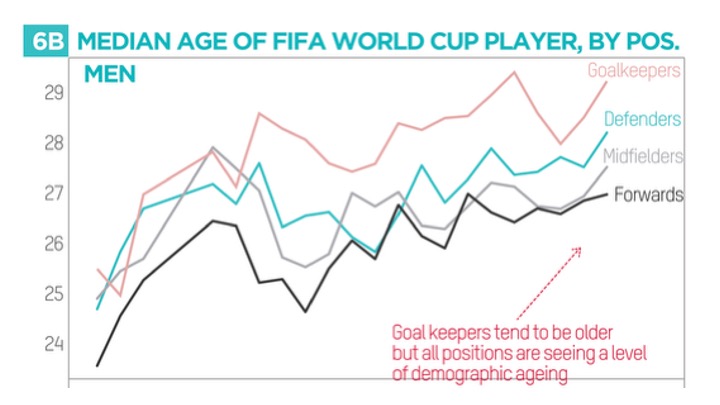
This sounds a bit right. My body is slowing down every season; my recovery time is longer — but I am probably playing smarter.
What is true of sport is true of many parts of life — this is why sporting illustrations are preaching gold. This season stuff is true of discipleship too. Becoming more like Jesus — our habits and practices will look different in different seasons of life — our capacity will vary, but there are ways our experience teaches us to be smarter.
Discerning the changing of seasons and how this changes what we are called to do within our limits is vital to redeeming the time. This sort of discernment is important for our own growth and for the role we play in the household of God.
So. What season of life are you in? What does living wisely — building wisely by practicing the way of Jesus — look like in this season with your mix of experience and strength and energy and availability and ability? Especially where you maybe cannot jump at tasks you might have in earlier seasons, but where you have developed some other skills — or maybe you are just tall.
Our lives will be made up of various seasons; you have got your classics — birth, childhood, adolescence, young adulthood, adulthood, middle age, old age, dying — and then sorts of shifts that happen along that continuum — education, getting a job, leaving home, maybe marriage, maybe kids, maybe job loss, maybe buying a home, maybe renting, maybe grieving relationship breakdown, or singleness, or childlessness, maybe job transitions, raising teens, maybe caring for an elderly parent, grandparenting, grieving dying parents, grieving lost children, a medical diagnosis — every one of these is not just an ‘event’ where it just happens in a moment and is gone; these are experiences that stretch over a body of time, often overlapping.
And if we pretend they do not change our capacity — or what faithfulness and wisdom look like in our lives — we are kinda missing part of what it means to inhabit time faithfully while seeking God; seeking to become godly in the circumstances where he has placed us.
Part of maturity is not just knowing who I am and acting with integrity — it is — as Jamie Smith puts it in How to Inhabit Time — being able to answer the question “When am I?”
He reckons seasons are a better way to discern when we are and how we should live than days and dates… that if we discern what season we are in, this helps us know what to expect, and that the key to living well through these seasons is not numbering our days by the sun, but by remembering that in every season, we revolve around the Son.
“The answer to the question ‘When am I?’ is not six o’clock or 2022; it is more like youth, middle age, chapter 3 of a life… To ask ‘When are we?’ is not a question of counting years as much as discerning a season, knowing what to expect… Remembering that, in every season, we revolve around the Son.”
Somehow that pun is less clichéd when you have as much panache as Smith.
This discernment of the seasons helps us see that our situations are temporary; to receive the good and live through the bad… which is the tension the poem in chapter 3 of the book of Ecclesiastes explores; it is an invitation to discern the time — the season — and act appropriately.
The poem opens declaring there is a time and a season for everything — and then it describes a bunch of times — seasons — where different actions are appropriate — as well as milestone moments — birth and death, planting and uprooting, killing and healing, tearing down and building.
Some people might say deconstruction and construction here. Some of us have experienced these sorts of seasons in our lives, our faith, our relationships. In any of these, if you do the wrong thing, that is bad, right? We had some ‘help’ from some folks in the garden out the back where we uprooted when we should have been tending to the plants, and it set the garden back a bit.
A time to weep and a time to laugh, to mourn or dance, to scatter or gather, to embrace or refrain, to search and to give up, to keep or throw away, to tear or mend, to be silent or speak, love and hate, war and peace — lots of these are momentary, but some of them are seasons (Ecclesiastes 3:1–7) — and wisdom lies in discerning the difference and acting according to the time.
This list — they are all actions where we have agency to respond to the situation or season or time we find ourselves in — and maybe one of the things this poem also invites us to see is that if we are always just doing one of these options — always uprooting or deconstructing and never moving into a different season — then we might be stuck in a less than wise rut. We are made to discern the time and to act in ways that go somewhere.
Although, the writer of Ecclesiastes is maybe not sure there is anywhere to go, because our seasons end. Eventually.
We worked through the book of Ecclesiastes as a church when we were looking at the books that are often called Wisdom Literature; we saw how it tells the story of someone — a teacher — who we are meant to identify as King Solomon searching for meaning under the heavens (Ecclesiastes 1:12–13); specifically, under the sun — which is a phrase that mostly seems to be about life on earth without much reference to God (Ecclesiastes 1:13–14). In Genesis it is the heavenly lights that shape how we measure the passing of time on earth (Genesis 1:14).
Solomon is trying to make sense of life if death is the end of the story — if every moment is fleeting — this Hebrew word hevel that gets translated as “meaningless” (Ecclesiastes 1:13–14), but is more literally the word “breath” — if every moment, every season, is temporary.
The whole book is an extended meditation on the burden the teacher describes after his poem (Ecclesiastes 3:10) as “the burden God has laid on the human race.”
The burden is this idea that everything is beautiful in its time, but that time seems so fleeting in the face of eternity — and our longing for something lasting — that sits beside knowing our fate; knowing one day the breath will leave our bodies; one breath will be our last. Fleeting. Meaningless. Breath (Ecclesiastes 3:11).
In this he reckons we are no different to the animals… the same fate awaits us all; the same breath animates our bodies. Everything is breath. Temporary (Ecclesiastes 3:18–19).
The teacher’s advice is to embrace the moment; discern the time — the season — and roll with it; eat, drink, be merry — work hard and enjoy our labour — know that whatever season you are in, good or bad, it will pass — and that life is a series of different times and experiences and moments (Ecclesiastes 3:12–13).
There is some wisdom here, right? When it comes to not trying to make fleeting things eternal. We can waste a lot of time and money trying to be eternally young and never die. We can look for magical ‘forever young’ solutions; trying to hold on to a magic season and never experience the maturity and wisdom that comes through navigating our way through other seasons.
There is wisdom in discerning what season we are in under the heavens (Ecclesiastes 3:1), and how to live accordingly — in knowing when to move to over-35s, or walking football, or coaching rather than trying to keep up with 20-year-olds.
The teacher in Ecclesiastes does not have the same perspective Paul offers in 1 Corinthians — where Paul says, “Actually, the resurrection of Jesus and our resurrection with him is a game changer for how we live in time.” It is not that we should not discern the seasons still, but picking a wise reaction to each season includes hopeful certainty about where we are going.
He also uses a bit of seasonal language — farming language — through this passage, as he describes the resurrection of Jesus as the first fruits (1 Corinthians 15:20); the beginning of a new season — the start of something new even for those who have died already.
It is fun reading this bit of 1 Corinthians and its wisdom side by side with Ecclesiastes. The teacher says “humans and animals have the same breath of life” — which is a reflection on Genesis 1 and 2 — and death makes everything “breath” — fleeting. Paul is like, “Yep. Without the resurrection of Jesus, this is true — even faith is futile” (Ecclesiastes 3:19; 1 Corinthians 15:17).
If he is not raised and we are not raised, then the teacher’s wisdom is right — eat, drink, and be merry, because tomorrow we die (Ecclesiastes 3:13; 1 Corinthians 15:32).
But there is a game changer — our dying “under the sun” bodies are not the end of the story. Living in dying bodies still requires wisdom and discerning seasons of time and what these perishable bodies are capable of — but because of the resurrection of Jesus, these dying bodies of breath are not the end of the story (1 Corinthians 15:42–43).
Our natural bodies will be replaced with spiritual bodies (1 Corinthians 15:44). There is a fun thing in the Greek here where Paul is playing with two different words that can be translated as “breath” and “spirit.” What we get as “natural” uses the same Greek word the Greek translation of the Old Testament uses for the breath of life — the fleeting breath that animates even the animals but disappears on death. And the resurrection body — Paul uses the word pneuma — or spirit — here, the word used for the Holy Spirit. Jesus’ resurrection breath being given to our bodies changes the story.
Now we do have something the animals do not. We had the same breath; now we are animated by God’s Holy Spirit (Ecclesiastes 3:19; 1 Corinthians 15:44).
Now not everything is meaningless… breath. Fleeting. Ending in death. Our destiny has changed; our season has changed; our burden has been lifted. Now we are living — as those with the Spirit — in anticipation of an entirely different season with an entirely different body; one that will not break down and decay, while our experience grows.
I do not know if this graph is entirely accurate — I do not know if our heavenly, imperishable, glorious bodies will be 27, or improve over time — but we will not be experiencing the frustration that comes from dying and decaying bodies that break down and recover slower.
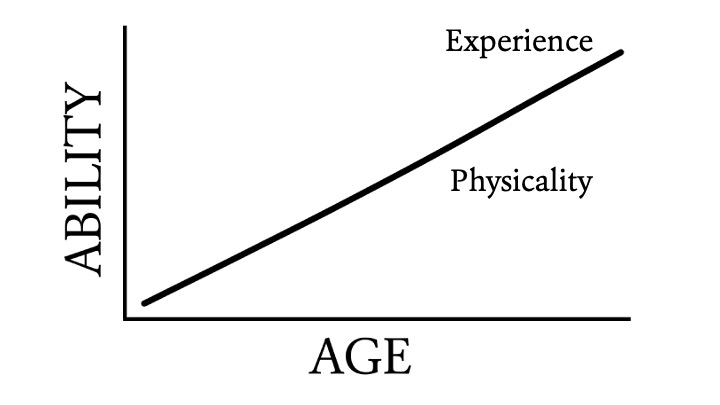
One day the perishable will be clothed with the imperishable — the mortal with immortality (1 Corinthians 15:54). We will see continuity in the bits of our lives that we have invested in the spiritual reality, the life of Jesus — and the other bits will be left in the grave and defeated.
And this future hope might inform how we navigate seasons of frustration and change now — or even great seasons of joy and productivity where we might be inclined to forget eternity and try to make these fleeting moments last forever.
Paul says through Jesus and his resurrection we are liberated from the worst aspects of time — death — as we are also liberated from sin and the law that condemns us. We have this victory through Jesus (1 Corinthians 15:56–57). That is what you want at the end of a good season.
And so this shapes every moment.
Paul says we ought to stand firm — no matter the season we are in — not be moved from this truth that shapes our days and our seasons and our lives. Always — through every season — giving ourselves fully to the work of the Lord (1 Corinthians 15:58).
That will change season by season, in accordance with our obligations and our limitations and our health and our energy and our strength — but when we are labouring in the Lord it is not meaningless; it is not vanity; it is not just breath — it is not just under the sun (Ecclesiastes 1:13–14).
It is for eternity — an eternity enjoying the fruits of this work for God as he sets the table for us to eat, drink, and be merry under the Son.
This is God’s answer to the longing for eternity set in our hearts. It helps us receive beautiful seasons and moments now as temporary pictures of what is to come, and the ugliness — especially the ugliness of dying — breaking down to dust — as temporary struggles and sorrows that will also pass and can be endured.
So how do we do this? What are some practices we can embrace to live seasonally; to rightly number our days, asking “When am I?” discerning the time so we can redeem it and live wisely?
Some of us are in our physical prime — we have so much energy and motivation; we are not weighed down by some of the commitments that come with family — whether with a spouse and kids, or ageing parents who need care — we might lack some experience and wisdom, but that will come with practice. Stewarding this season might mean stepping up and saying yes to challenging things, recognising that you have this season as a gift, and that it is fleeting. This might play out at work or at home or here at church. I am thankful for the way so many younger adults without kids serve our community with energy and enthusiasm — especially those who are teaching kids in kids church to help parents navigate this season.
This season for you might involve grief about unrealised hopes, or navigating the path to get to a new season. This requires discernment, recognising limits — our humanity — maybe even confronting the way our bodies are imperfect and limited no matter how hard we push them. That is okay. There are practices you can embrace in this season that will grow you towards your eternal future. You might look around and resent some older folks because of how much you are doing and forget that older folks have been through that season, have done the stuff you are doing now — and might wish to still be doing it… but they… we… just cannot.
Many of us are past our physical prime. It is true. We are in dying bodies that do not have the energy we once had. How do we live faithfully with the time we have left — valuing our experience? Maybe there is a set of habits or practices you might embrace that are the discipleship equivalents of walking football or coaching; slowing down — still doing the stuff you loved, but as someone who brings experience but not speed to the field, or helping from the sidelines; energising and encouraging. Maybe there is stuff you imagine that you cannot do anymore because you cannot do what you used to — but maybe you are like a goalkeeper and you might find you have got more useful with age, and wasting energy is not the wisest path.
I have got to say — I do not just love that young adults are involved in our kids ministry — you might not have noticed, but our elders are rostered on creche or kids church most weeks. You might join them. Your knees might not cope with playing on the carpet, but you can take a chair and offer love to our kids — or find ways to help parents in our church navigate this season, or offer support and encouragement to single folks navigating a complex season filled with griefs and hopes and challenges to stay godly that look different for each of us.
This discernment — it is not a solo sport. It is part of living in the household of God (1 Timothy 3:14–15); part of being family for each other — the environment in which we each grow and learn and navigate seasons with those who have gone before and those coming after us.
Discernment requires listening — perhaps to those who have gone before — not because being old automatically brings maturity, but because navigating seasons with wisdom that produces godliness is actually what maturing might look like. I know as a younger person I was dismissive of older folks, because what would they know — and I still can be — but now as an older person I am realising that some of what I offer is maturity, not just old-person thinking, and some of what younger people — not exclusively my own children — lack is hard-won maturity, where some of that winning happens through struggle, but maybe some of it is easier to navigate with a good coach.
Those of us who are younger might need to cultivate a practice — and the sorts of relationships — where we can listen to older, more mature voices, while those of us who are older might need to realise what we have to offer; discerning what is mature and what is appropriate for any given season of life — not just cultivating an expectation that young folks will act just like us. That is not wise either. Wisdom is about acting according to our season.
Smith talks about this as a bit like time travel, where the church is like a time machine; as older, wiser folks who have negotiated a season can report futures those navigating a season cannot comprehend — creating hope. He says:
“Trading testimonies across generations turns the communion of saints into a time machine… When an older friend reports from a future you could not imagine, your imagination is infused with a new possibility. That is called hope.”
Some of us are entering — or in — the final season. And this season presents its own particular moments; fleeting moments that might not come back and might be savoured or grieved with particular weight. It is not easy for a young bloke like me only just past sporting retirement age to speak about this — but this is a season some of you are facing. A season not of firsts but of lasts, or “maybe lasts,” where you are just not sure.
And we want to honour that as your church family; to walk with you, to laugh with you, to cry with you, and to be there through this time — as you work out how to say goodbye; how to finish well — and as you model that to us too — especially how to finish well — to mourn while hoping.
We want to see you live as though life is not meaningless but death has been swallowed up in victory, and we want to play our part in celebrating and reminding you of that while thanking God for the seasons you have experienced. Because one day, whether we know it or not, we each experience this season.
The call for each of us — in each season — is the same; according to our ability and capacity and experience — it is to not be moved from our hope; to stand firm in Jesus and give ourselves fully to the work of the Lord. To live for him. To live shaped by the way he shapes time.
One way Smith reckons churches can do this is to think differently about time — to see time as cyclical, not linear. There is an ancient practice where church communities have structured their years to rehearse and remember the Christian story — the church calendar — holy days — they still mark our secular calendar with Christmas and Easter — but this is a way to remember that time does not revolve around the sun but the Son; and that we do not live under the sun but under the Son. He is our centre of gravity.
In this calendar each year begins with a deliberate movement towards the events of Gethsemane and the cross — the silence of Easter Saturday and the explosion of light from the rising Son.
“The Christian inhabits time as cyclical and linear… The liturgical calendar rehearses the way time curves and bends around the incarnate Christ like a temporal center of gravity. Every year, the church walks with Jesus toward Gethsemane, bears witness to his anguish and suffering, steps again into the chilled shadow of the cross, lives with the harrowing silence of Holy Saturday, and arrives on Easter morning to witness the explosion of light that is the resurrection of the Son of God.”
And we end the calendar with Advent, anticipating, hoping for the coming of the Messiah, remembering that he has come — in flesh — stepping into time in a way that changes everything. Embracing this cycle — these annual seasons — we remind ourselves of our story in every season of our own life.
This is already something we have started to do more of together as we gather as a church, but marking time this way in your homes might be something you consider as we cultivate a rule of life together and navigate each season that life throws at us.
We are all caught up in the business of learning to tell the time; to discern the season we are in so that whenever we are in life, we can give ourselves fully to the work of the Lord, because when we labour in him — eyes and hearts towards eternity — it is not in vain.

